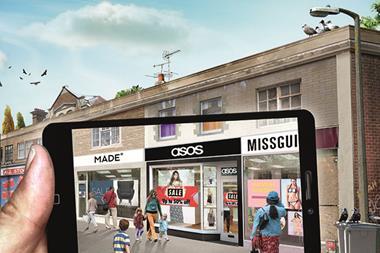It was not supposed to be this way. Last month, Dixons Carphone, the owner of Currys, PC World and Carphone Warehouse, said that profits for its financial year would be higher than initially expected.

A day earlier, AO World, the company behind the online white-goods retailer AO.com, posted a pre-tax loss for the year.
In the last year, shares in Dixons Carphone have risen by more than 40%, while AO is down more than 45%. What happened to the online revolution?
When Dixons Retail and Carphone Warehouse agreed a £5bn merger last year, it was dismissed by critics as akin to two drunks propping themselves up at the bar. It doesn’t appear that way now.
As John Roberts, the outspoken boss of AO World, presented his company’s disappointing results, he spoke of a “challenging environment” in the UK and fierce competition.
AO is not the only online retailer to hit bumps in the road. ASOS has also endured a rocky 12 months while Amazon, the biggest online retailer in the world, lost $241m (£155m) last year on sales of $89bn.
Bricks-and-mortar retailers have endured a troubled seven years since the collapse of Lehman Brothers. Almost 750 shops closed in 2014 as a result of high-profile administrations and a further 80,000 could close by 2017, according to the British Retail Consortium, as leases come up for a renewal. The supermarket industry remains in chaos, with the influx of competition from the discounters, convenience stores and new online rivals such as Ocado destroying profit margins as shoppers enjoy greater choice.
But, as established retailers begin to restructure their property estate, easing the financial burden of rent and business rates, they are fighting back. We are beginning to see what the future of retail looks like, and physical shops remain at the centre.
Ever since Black Friday last November, a day of discounting around the country, the growth in online sales has been patchy. In the first quarter of 2015, onlinesales grew by just 7% according to industry body IMRG, the slowest growth ever recorded.
The latest monthly figures suggest this trend has continued in the months since. Online sales still make up less than 18% of all non-food sales in the UK. In food, it is even less. Industry forecasts suggest that by 2020, online will still only account for 8.6% of grocery sales in the UK.
Online sales
Of course, eventually, online sales will account for a larger proportion than this. Retailers with established and thriving digital businesses, such as John Lewis, think that online will account for roughly half of sales in the near future, but they are not expecting much more than that.
Online already accounts for roughly a third of John Lewis sales across the UK. However, in some parts of the country - such as south-west London - it is closer to 40%. In these more advanced parts of the online market, the retailer believes it is approaching the peak in sales. Andy Street, the boss of John Lewis, said last year that it was “premature” to call the end of the online revolution, but added: “We can see the rate of acceleration is slowing.”
The terms ‘multichannel’ and ‘omnichannel’ are two of the most dreadful pieces of jargon ever to make their way into the retail industry. But they are accurate. In order to survive and thrive in the future, retailers will have to reach customers through various different formats.
There are a handful of key economic reasons for this, from the point of view of the customer and the retailer.
First, online retailing removes the most efficient parts of physical retailing, and as a result they have struggled to generate a profit. The beauty of a supermarket or a high-street store is that the customer does the work - they travel to the shop to pick up the product, they put into their basket and they take it home.
Second, in the new world, shoppers want convenience. Home delivery is not a convenient option for someone working seven days a week. Instead, they prefer to pop down to their local high street at lunchtime to pick up a new shirt.
Third, the physical shop is also a form of marketing. John Lewis says that when it opens a shop, online sales in the area increase significantly. It boosts brand awareness. But it is also a source of marketing for manufacturers whose new television or watch gets lost in the crazy world of the internet.
The final point is not an economic reason, but it is a crucial and real source of customers for high-street stores - people like to socialise and shop.
So while AO and co clearly have a future, growing market share will not be as easy as some thought. Many high-street names have existed for more than 100 years, surviving world wars, recessions and the rise of the supermarket. They have adapted before, and they are adapting again.
Graham Ruddick is deputy business editor (retail and technology) at The Telegraph






























No comments yet